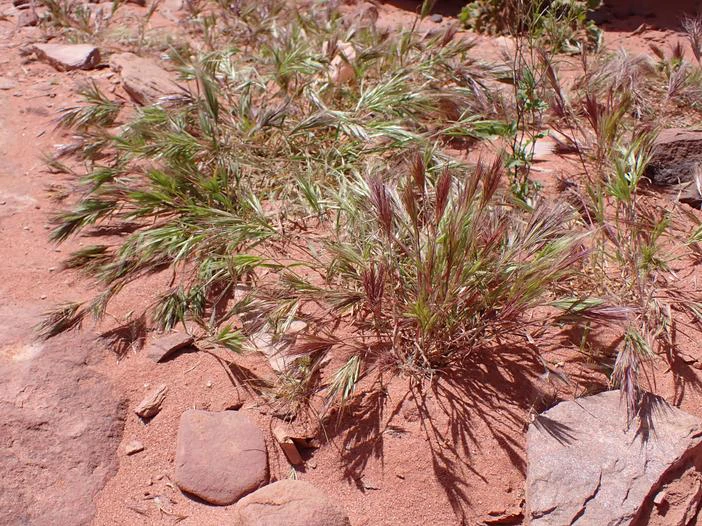Desert Brome
(Bromus fasciculatus)
Desert Brome (Bromus fasciculatus)
/
/

Krzysztof Ziarnek, Kenraiz
CC BY-SA 4.0
Image By:
Krzysztof Ziarnek, Kenraiz
Recorded By:
Copyright:
CC BY-SA 4.0
Copyright Notice:
Photo by: Krzysztof Ziarnek, Kenraiz | License Type: CC BY-SA 4.0 | License URL: https://creativecommons.org/licenses/by-sa/4.0 | Uploader: Kenraiz | Publisher: Wikipedia Commons






Estimated Native Range
Climate Requirements
| • Precipitation | 13" - 27" |
| • High Temp. | 83°F - 93°F |
| • Low Temp. | 36°F - 47°F |
Summary
Bromus fasciculatus, also known as Desert Brome, is an annual grass native to desert regions and arid grasslands in the Mediterranean Basin, Middle East, and North Africa. It typically grows to a height of 10-50 cm. Desert Brome is characterized by its open, airy panicles of flowers that appear in late spring to early summer. The flowers are not particularly showy, but the plant has a delicate, feathery appearance that can add texture to a garden setting.
Desert Brome is valued for its drought tolerance and ability to thrive in poor, sandy soils, making it suitable for xeriscaping and restoration projects in arid environments. It is often used for erosion control and as a cover crop in areas with low rainfall. In cultivation, it requires minimal water once established and prefers full sun exposure. While it can be a useful plant in its native range, it is potentially invasive in some parts of the world, and gardeners should be cautious about introducing it to new areas.CC BY-SA 4.0
Desert Brome is valued for its drought tolerance and ability to thrive in poor, sandy soils, making it suitable for xeriscaping and restoration projects in arid environments. It is often used for erosion control and as a cover crop in areas with low rainfall. In cultivation, it requires minimal water once established and prefers full sun exposure. While it can be a useful plant in its native range, it is potentially invasive in some parts of the world, and gardeners should be cautious about introducing it to new areas.CC BY-SA 4.0
Plant Description
- Plant Type: Grass
- Height: 1.5-3 feet
- Width: 1-2 feet
- Growth Rate: Rapid
- Flower Color: N/A
- Flowering Season: Spring, Summer
- Leaf Retention:
Growth Requirements
- Sun: Full Sun, Part Shade
- Water: Medium
- Drainage: Fast, Medium, Slow
Common Uses
Erosion Control, Low Maintenance
Natural Habitat
Native to desert regions and arid grasslands in the Mediterranean Basin, Middle East, and North Africa
Other Names
Common Names: Rescue Grass
Scientific Names: Bromus fasciculatus, Anisantha fasciculata, Anisantha fasciculata, Anisantha fasciculata subsp. delilei, Anisantha flabellata, Anisantha madritensis subsp. delilei, Bromus fascicularis, Bromus fasciculatus f. parlatorei, Bromus fasciculatus subsp. delilei
GBIF Accepted Name: Bromus fasciculatus